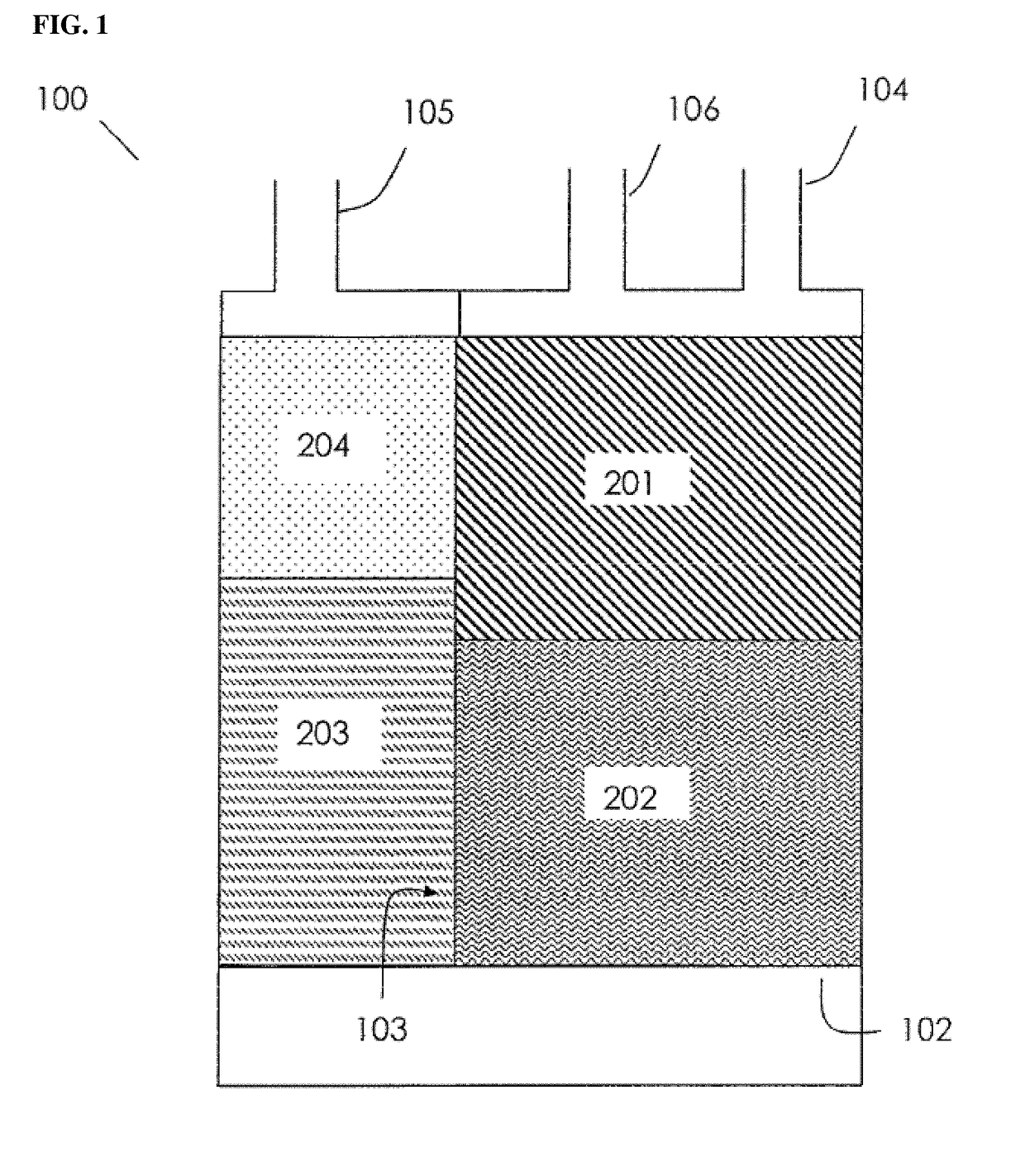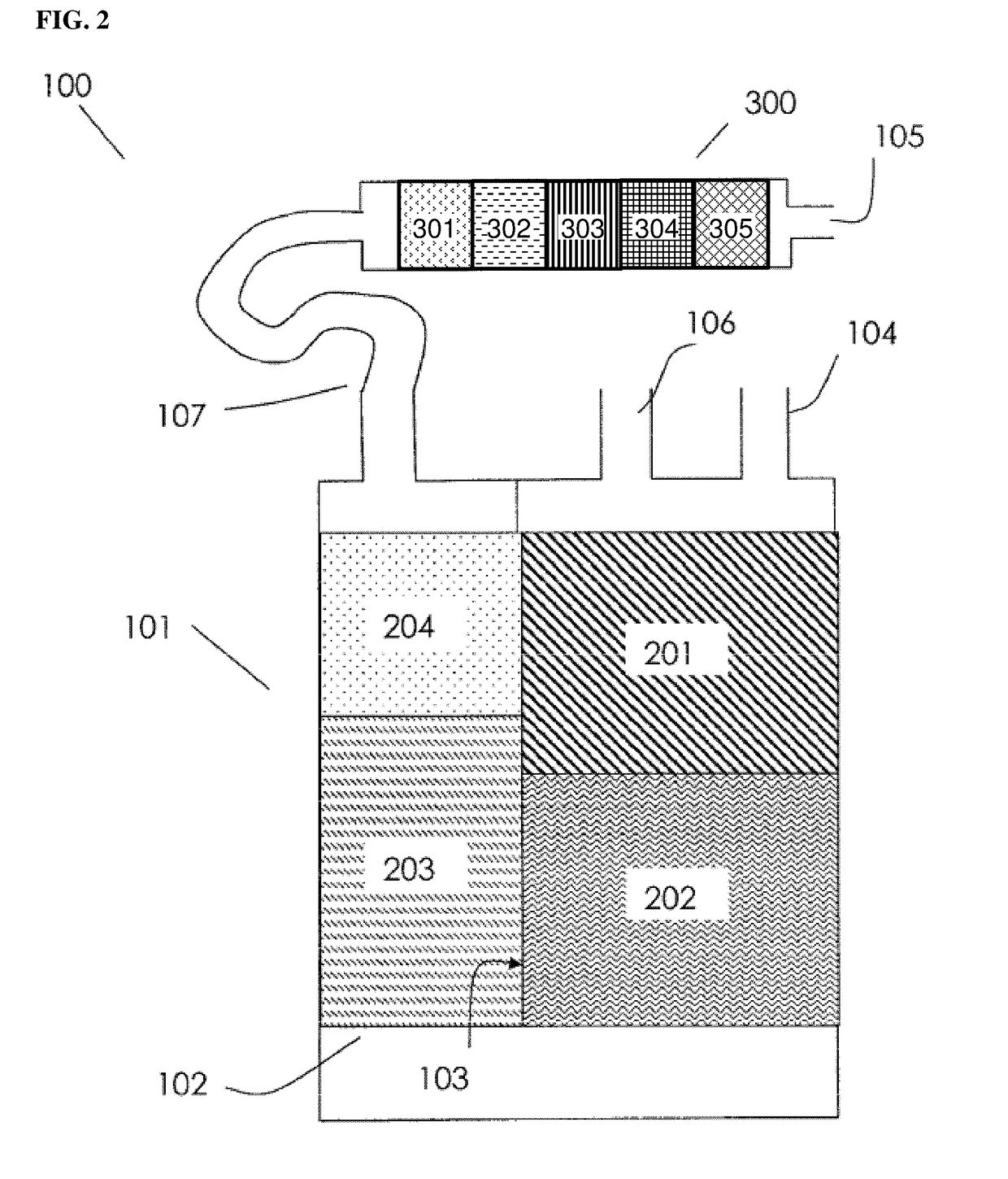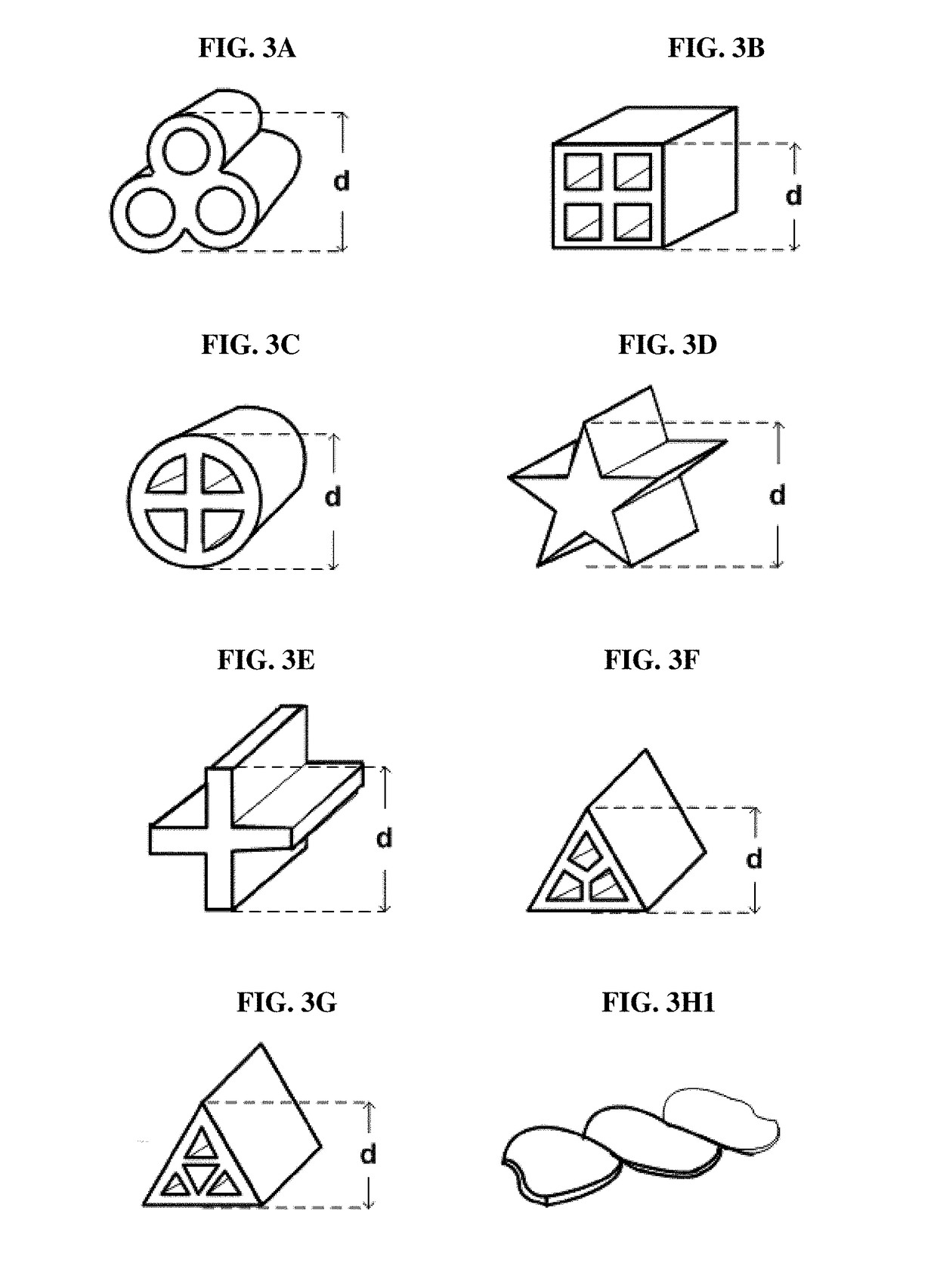Evaporative fuel vapor emission control systems
a technology of emission control system and evaporative fuel, which is applied in the direction of machines/engines, separation processes, mechanical equipment, etc., can solve the problems of affecting tailpipe emissions, one size does not fit all, and complicating management, etc., and achieves low purge volume, low dbl, and low purge
- Summary
- Abstract
- Description
- Claims
- Application Information
AI Technical Summary
Benefits of technology
Problems solved by technology
Method used
Image
Examples
examples
[0216]Determination of Apparent Density
[0217]The standard method ASTM D 2854-09(2014) (hereinafter “the Standard Method”) may be used to determine the apparent density of particulate adsorbents, taking into account the prescribed minimum ratio of 10 for the measuring cylinder diameter to mean particle diameter of the particulate material, with mean particle diameter measured according to the prescribed standard screening method.
[0218]Determination of Macroscopic Pore Volume
[0219]Macroscopic pore volume is measured by mercury intrusion porosimetry method ISO 15901-1:2016. The equipment used for the examples was a Micromeritics Autopore V (Norcross, Ga.). Samples used were around 0.4 g in size and pre-treated for at least 1 hour in an oven at 105° C. The surface tension of mercury and contact angle used for the Washburn equation were 485 dynes / cm and 130°, respectively. Macropores as referred to herein, are those that have a diameter of from about 100 nm to about 100,000 nm.
[0220]Dete...
PUM
| Property | Measurement | Unit |
|---|---|---|
| Length | aaaaa | aaaaa |
| Fraction | aaaaa | aaaaa |
| Fraction | aaaaa | aaaaa |
Abstract
Description
Claims
Application Information
 Login to View More
Login to View More - R&D
- Intellectual Property
- Life Sciences
- Materials
- Tech Scout
- Unparalleled Data Quality
- Higher Quality Content
- 60% Fewer Hallucinations
Browse by: Latest US Patents, China's latest patents, Technical Efficacy Thesaurus, Application Domain, Technology Topic, Popular Technical Reports.
© 2025 PatSnap. All rights reserved.Legal|Privacy policy|Modern Slavery Act Transparency Statement|Sitemap|About US| Contact US: help@patsnap.com



